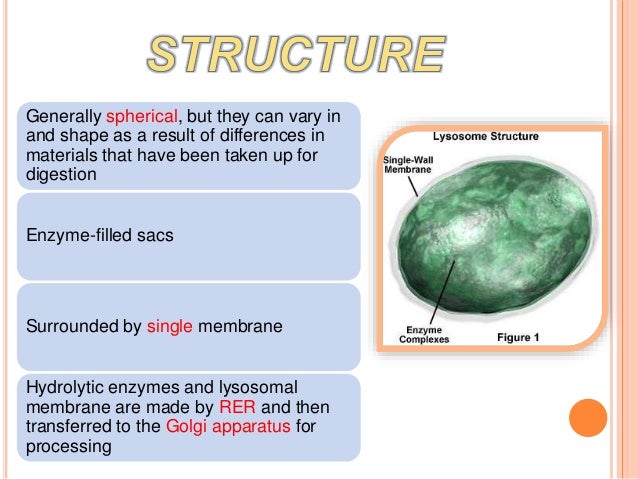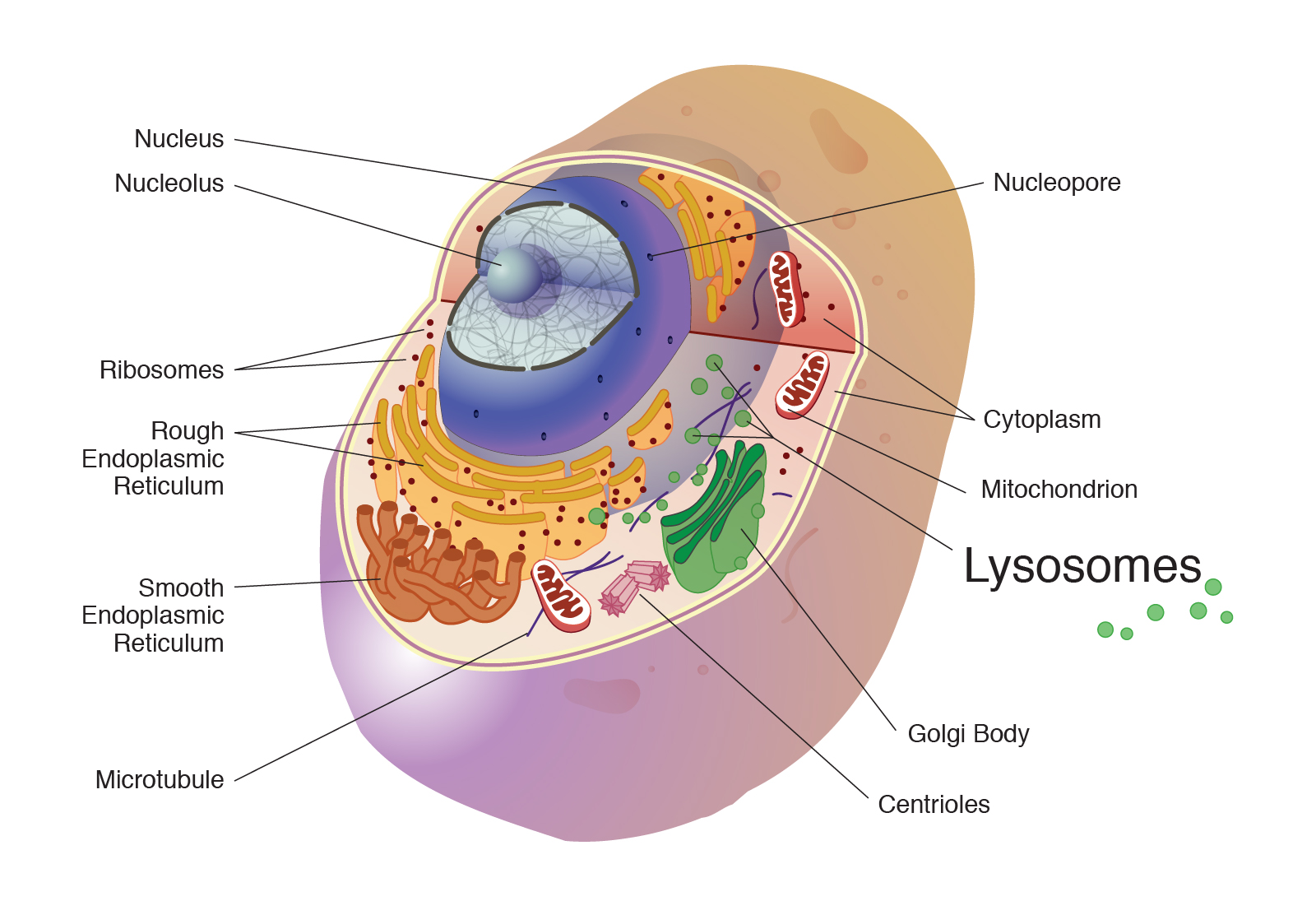These enzymes are made up of Rough Endoplasmic Reticulum. Those proteins are packaged in a vesicle and sent to the Golgi apparatus.
They have a single outer membrane consisting of a phospholipid bilayer.
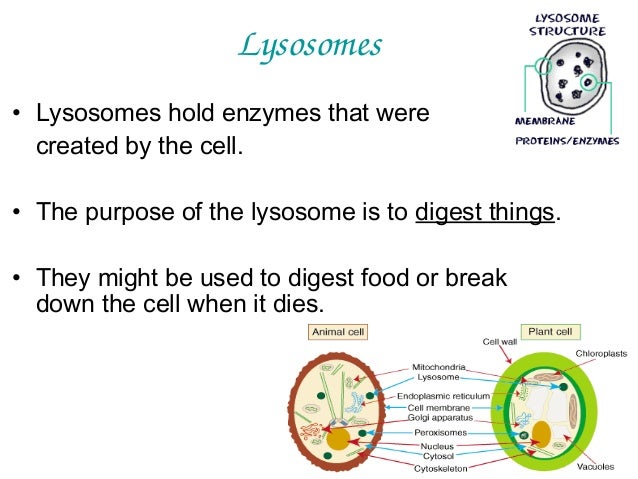
What are lysosomes made of. Lysosomes - Lysosomes are membrane-bound sacs that are filled with digestive enzymes. The enzymes are tagged with the molecule mannose-6-phosphate transported to the Golgi apparatus in vesicles and then packaged into the lysosomes. They are not found in plants but vacuoles perform the role of lysosomes in plant cells.
It was first discovered by Belgian cytologist Christian de Duve in 1949. Lysosomes are also called suicide bags of a cell because during the disturbance of cell metabolism or when the cell gets damaged lysosome may burst and the enzymes may digest their own cell. Lysosomes are membrane-bound dense granular structures containing hydrolytic enzymes responsible mainly for intracellular and extracellular digestion.
50nm to 1 mm lysosomes have a single outer membrane consisting of a phospholipid bilayer and contain acid hydrolases which are enzymes capable of breaking-down macromolecules. Lysosomes are small cell organelles in nucleus-bearing or eukaryotic cells. Lysosomal enzymes are made with polyribosomes and initially sequestered in the rough endoplasmic reticulum.
The word lysosome is made up of two words lysis meaning breakdown and soma meaning body. Ribosomes are concerned with protein synthesis in the cell. Enzymes of the lysosomes are synthesised in the rough endoplasmic reticulum and exported to the Golgi apparatus upon recruitment by a complex composed of CLN6 and CLN8 proteins.
These enzymes can break down many types of biomolecules such as proteins and fats. How are lysosomes made. Some plant cells are thought to have lysosomes though there is some debate on the matter.
Ribosomes are made up of 35 of proteins and 65 of ribonucleic acid RNA. They contain about fifty different enzymes that break down all types of biological molecules including proteins nucleic acids lipids and carbohydrates. Lysosomes are formed from the fusion of vesicles from the Golgi complex with endosomes.
The enzyme proteins are first created in the rough endoplasmic reticulum. The Golgi then does its final work to create the digestive enzymes and pinches off a small very specific vesicle. Lysosomes contain a wide variety of hydrolytic enzymes acid hydrolases that break down macromolecules such as nucleic acids proteins and polysaccharides.
The left hand view of this cartoon shows the free polyribosomes connected by the mRNA. Lysosomes are membrane-bound spherical sacs filled with hydrolytic enzymes. These organelles are granular and small dot-like structures with a diameter of 15 nm.
Lysosomes are known to contain more than 60 different enzymes and have more than 50 membrane proteins. A lysosome is a type of membrane-bound organelle that is present in animal cells. Lysosomes are membrane-bound organelles that function as the stomachs of eukaryotic cells.
A lysosome is basically a specialized vesiclethat holds a variety of enzymes. Lysosomes are cell organelles almost exclusively found in eukaryotic animal cells. RNA present in ribosomes is called ribosomal RNA rRNA.
Lysosomes are membrane-bound organelles which are found in animal cells. Lysosomes are formed by budding from the Golgi complex. They are located in the cytosol of the cells floating freely within the cells outside the nucleus.
A lysosome is composed of lipids which make up the membrane and proteins which make up the enzymes within the membrane. Lysosomes are made just like all other organelles basically. Lysosomes are formed by budding off of the Golgi apparatus and the hydrolytic enzymes within them are formed in the endoplasmic reticulum.
The general structure of a lysosome consists of a collection of enzymes surrounded by a single-layer membrane. Ranging in diameter from approx. The lysosome is a cytoplasmic organelle present in eukaryotic cells.
The lysosome word is made up of two Greek words lyso means split or break and soma means body. Usually lysosomes are between 01 to 12mm but the size varies based on the cell type. The machinery proteins that make them lysosomes is made in the ER or the cytosol its trafficked to the organelle where it functions.
Lysosome enzymes are made by proteins from the endoplasmic reticulum and enclosed within vesicles by the Golgi apparatus. They have a simple structure made up of an outer lysosomal membrane surrounding an acidic interior fluid. Endosomes are vesicles that are formed by endocytosis as a section of the plasma membrane pinches off and is internalized by the cell.
 Lysosomes Structure Definition Function Diagram
Lysosomes Structure Definition Function Diagram
Lysosomes And Peroxisomes Celebrate Cytochemistry Gwen V Childs Ph D
Lysosomes Biology Encyclopedia Cells Body Function Process Different Life Types Membrane
 Lysosomes Definition Structure Functions And Diagram
Lysosomes Definition Structure Functions And Diagram
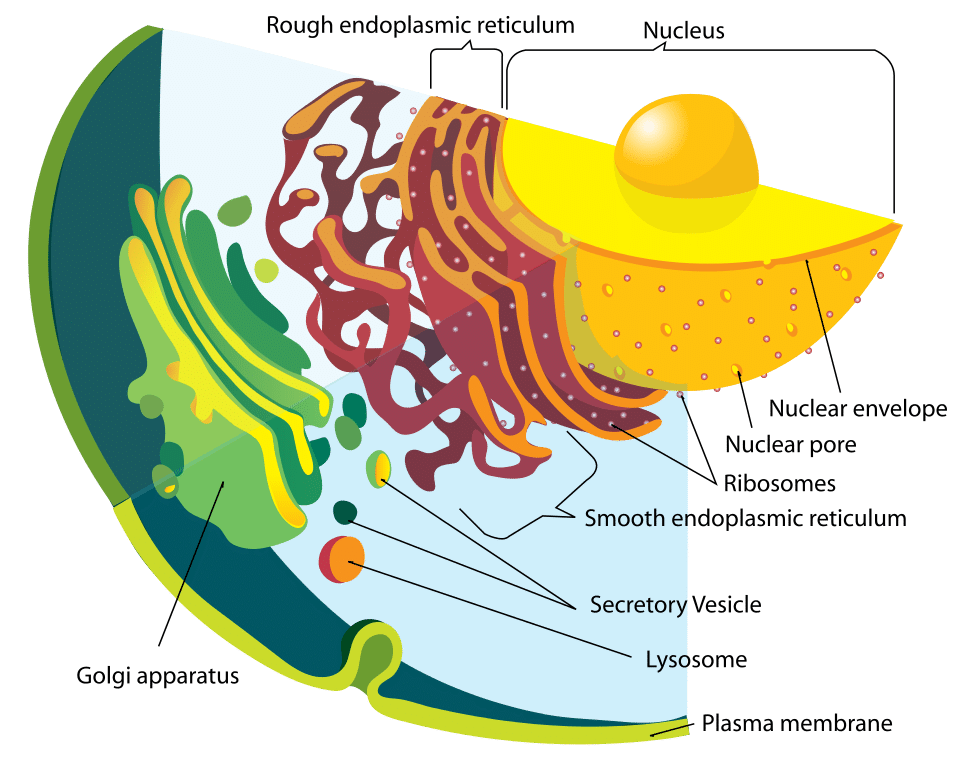 Lysosomes Structure Synthesis Function Teachmephysiology
Lysosomes Structure Synthesis Function Teachmephysiology
 Which Cell Organelles Make Lysosomes Quora
Which Cell Organelles Make Lysosomes Quora
 4 4d Lysosomes Biology Libretexts
4 4d Lysosomes Biology Libretexts
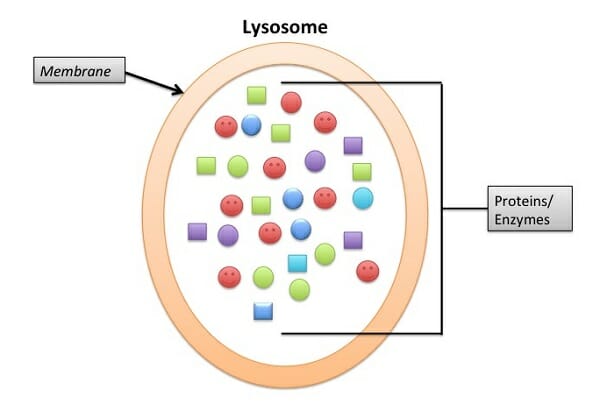 Lysosome Definition Function Structure Biology Dictionary
Lysosome Definition Function Structure Biology Dictionary
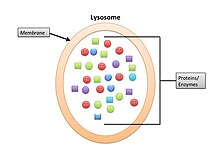 Structural Biochemistry Cell Organelles Lysosome Wikibooks Open Books For An Open World
Structural Biochemistry Cell Organelles Lysosome Wikibooks Open Books For An Open World
 Lysosome Definition Function Video Lesson Transcript Study Com
Lysosome Definition Function Video Lesson Transcript Study Com
 Lysosome Description Formation Function Britannica
Lysosome Description Formation Function Britannica
